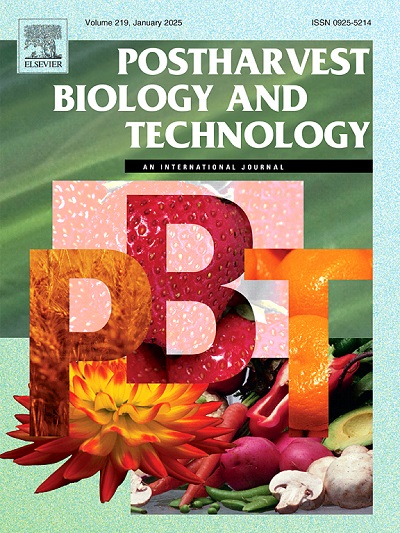Preharvest calcium chloride treatments enhance post-harvest peach fruit resistance to Monilinia fructicola-induced brown rot disease
IF 6.4
1区 农林科学
Q1 AGRONOMY
引用次数: 0
Abstract
Monilinia fructicola-induced brown rot disease can lead to substantial post-harvest losses in peach fruit, with major economic effects. Calcium chloride (CaCl2) treatment has been reported to mitigate brown rot in peaches, but the underlying molecular mechanisms involved remain largely unexplored. In this study, preharvest application of CaCl2 significantly reduced the incidence of brown rot in post-harvest peach fruit. Transcriptome analysis identified 208 differentially expressed genes during the 12–48 h post-infection period in CaCl2-pretreated peach that were predominantly associated with plant hormone signal transduction, plant-pathogen interaction, flavonoid biosynthesis, and amino sugar and nucleotide sugar metabolism. Preharvest CaCl2 treatment raised calcium levels and Ca2 +-sensor activity in infected fruit, boosting PpRBoh activity and transcription coincided with a reactive oxygen species burst. Moreover, CaCl2 treatments also increased methyl jasmonate (MeJA) content via upregulating expression of PpLCAT3, PpLOX, PpAOS, PpAOC, PpOPR, and PpJMT in α-linolenic acid metabolism, thereby activating the jasmonic acid (JA) signaling pathway. Conversely, CaCl2 treatment decreased indole-3-acetic acid (IAA) content via downregulating expression of PpTAA1, PpALDH, PpYUCCA1 in tryptophan metabolism, leading to a suppression of the IAA signaling pathway. Additionally, CaCl2 treatment elevated the levels of pathogenesis-related proteins, flavonoids, total phenolics and anthocyanins by stimulating phenylpropanoid metabolism. Furthermore, the weighted gene co-expression network analysis identified six gene modules of co-expresses genes, with blue and green modules significantly linked to the levels of flavonoids, total phenolics, anthocyanins and the activities of CHS, F3H, DFR, ANS, and BZ1, showing that polyphenolics biosynthesis is particularly related to the JA signaling gene PpMYC2 and the JAs biosynthesis genes. Consequently, CaCl2 sprays offer a promising alternative to chemical fungicides for mitigating peach fruit loss caused by M. fructicola infection during storage.
求助全文
约1分钟内获得全文
求助全文
来源期刊

Postharvest Biology and Technology
农林科学-农艺学
CiteScore
12.00
自引率
11.40%
发文量
309
审稿时长
38 days
期刊介绍:
The journal is devoted exclusively to the publication of original papers, review articles and frontiers articles on biological and technological postharvest research. This includes the areas of postharvest storage, treatments and underpinning mechanisms, quality evaluation, packaging, handling and distribution of fresh horticultural crops including fruit, vegetables, flowers and nuts, but excluding grains, seeds and forages.
Papers reporting novel insights from fundamental and interdisciplinary research will be particularly encouraged. These disciplines include systems biology, bioinformatics, entomology, plant physiology, plant pathology, (bio)chemistry, engineering, modelling, and technologies for nondestructive testing.
Manuscripts on fresh food crops that will be further processed after postharvest storage, or on food processes beyond refrigeration, packaging and minimal processing will not be considered.
 求助内容:
求助内容: 应助结果提醒方式:
应助结果提醒方式:


